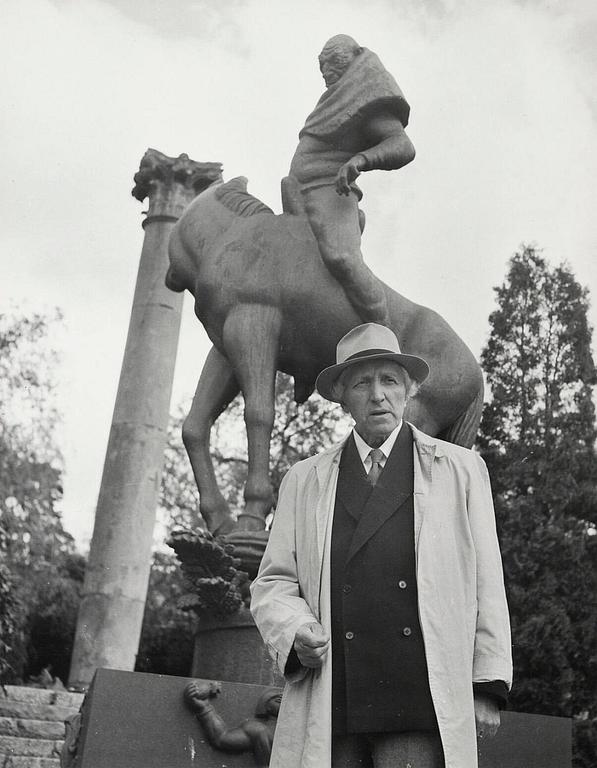Carl Milles
"Folke Filbyter"
Foundry mark Herman Bergman fud. No 2 1951. Bronze, green patina, height 73 cm. Column included.
Alkuperä - Provenienssi
Purchased by the current owner's grandfather
Kirjallisuus
M. P. Verneuil, "Carl Milles. Sculpteur suédois", 1929, compare page 78-90.
Henrik Cornell, "Milles skönhetsvärld", 1957, compare p. 23 and pl. 21-25 and pl- 70.
Henrik Cornell, "Carl Milles", SAK 1963, compare p. 68-72.
Erik Näslund, "Carl Milles. En biografi", 1991, compare p. 167-169.
Muut tiedot
Folke Filbyter is one of the most legendary figures from the Swedish medieval period. Folke Filbyter, the progenitor of the Folkunga dynasty, is depicted on horseback as he, according to legend, rode out in search of his grandson who had been abducted by monks. The inspiration for this motif was drawn by Milles from Verner von Heidenstam's novel "Folkungaträdet" which he had read as early as 1909, the same year his friendship with the author began. In Heidenstam's portrayal, Folke Filbyter's horse slipped on a wet stone as it crossed a ford, and it is this incident that Milles chose to depict. The composition is centered on the vigorous movement that arises when the horse momentarily loses its balance and uses the weight of its head in an attempt to regain control. The rider looks downward to quickly assess the situation. In this way, Milles captures the sense of movement he sought to portray.
The sculpture "Folke Filbyter" is a smaller version of the monumental sculpture group in the Folkunga Fountain that Carl Milles executed for the main square in Linköping in 1927. The group, through its well-thought-out composition, achieves remarkable versatility and meets the fundamental requirement of classical sculpture that a true free-standing sculpture must withstand viewing from seven different sides. When the Folkunga Fountain in Linköping was unveiled on the night of December 12, 1927, in torchlight and twenty degrees of frost, Verner von Heidenstam delivered the inauguration speech, stating: "It is a pioneering work, acting on the popular imagination, enriching and deepening."
Photo: Carl Milles at Millesgården, photografer Anna Riwkin, ca 1950.





























































